Suspended Chords (Sus) to Add Flavor In Your Playing
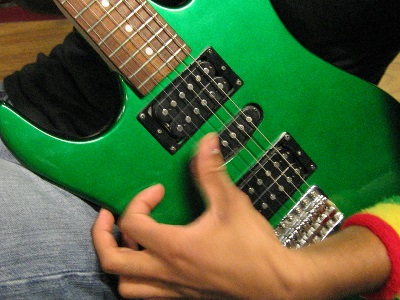 If you find yourself getting stuck in a rut and playing major and minor chords repetitively, the “sus” chords will be a great addition to your chord toolbox.
If you find yourself getting stuck in a rut and playing major and minor chords repetitively, the “sus” chords will be a great addition to your chord toolbox.
Suspended chords add color to chord progressions and can make your rhythm guitar playing sound like mini-melodies. When used in combination with other chords (typically major chords), suspended chords can also create tension and build musical climaxes.
In this lesson, I will show a couple of examples of how to integrate suspended chords in rhythm playing. You will also learn how to create triads with suspended notes and make use of them to explore new tones.
What Are Suspended Chords?
Suspended chords are commonly denoted as sus2 or sus4. In essence, they consists of the root note, 5th plus the 2nd or 4th note. Unlike the major/minor chords, the 3rd note isn’t used. Instead, it is substituted by the 2nd or 4th note in the scale.
Let’s learn how they are derived using the familiar C major scale. By now, you should already know that the C major chord consists of the 1st, 3rd and 5th notes of the major scale: C E G.

To get Csus2 chord, we substitute the 3rd note with the 2nd note and end up with the C, D and G notes. Similarly, the Csus4 chord consists of the notes: C, F and G. It’s pretty straightforward, isn’t it?
Since the difference lies in the 3rd, the fingerings for the majority of suspended chords can be easily derived from your basic chords by rearranging your fingers in the major chord shapes.
An Exercise With the Suspended Chords in A Major
In this exercise, we are going to make use of 3 chords: AMaj, Asus2 and Asus4. You can refer to the photographs below to see how they are fretted.
In short, the fingering for Asus2 is basically the same for an Amaj chord without the ring finger on the 2nd string. If you add your pinky finger to the 3rd fret of the 2nd string, you’ll get the Asus4 chord.
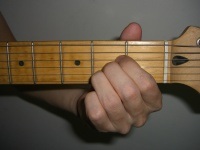
A Maj
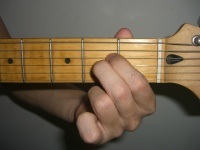
Asus2
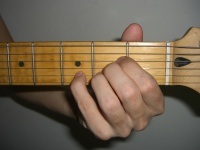
Asus4
Let’s begin by strumming an Amaj chord. Let it ring for a couple of seconds. I want you to listen to how it feels “kind of resolved”. Now, do the same for the Asus2 and Asus4 chords. Notice how they have a “tensive” nature to them? In order to resolve the suspended chords, you need to follow them up with a regular major chord.
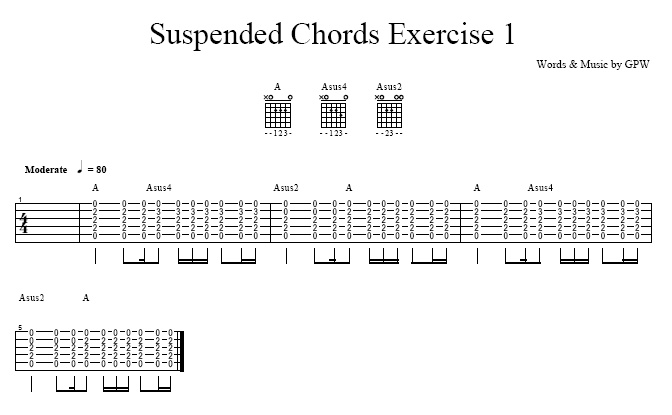
Download .gtp5 or .mp3 file ( Right-click Save Target as… )
Example in D Major – Sweet Child Of Mine
Here is another example of how suspended chords can be used to play short riff-like rhythms. This chord progression is a simplified version of the strumming pattern for Sheryl Crow’s Sweet Child O’ Mine.
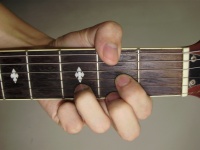
D Maj
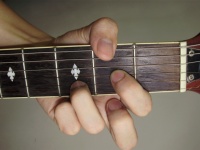
Dsus 2
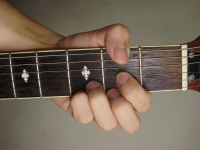
DSus 4
Download .gtp5 or .mp3 file ( Right-click Save Target as… )
To wrap up the lesson, the use of suspended chords can help you break away from monotonous progressions and embellish your playing. You should always exercise caution and use your best judgment when playing them. If it sounds right, go ahead and use it. If it doesn’t, trust your ears and leave it out. Have fun!
Looking For Step-By-Step Video Guitar Lessons?
Trusted by 200,000+ students, Jamorama is the leading provider of guitar courses. If you are looking for a fun way to learn the guitar and want to play-along to your favorite songs, check out Jamorama today…

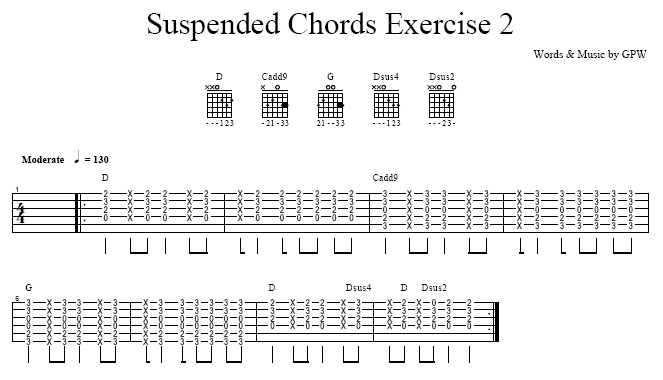






Leave A Comment